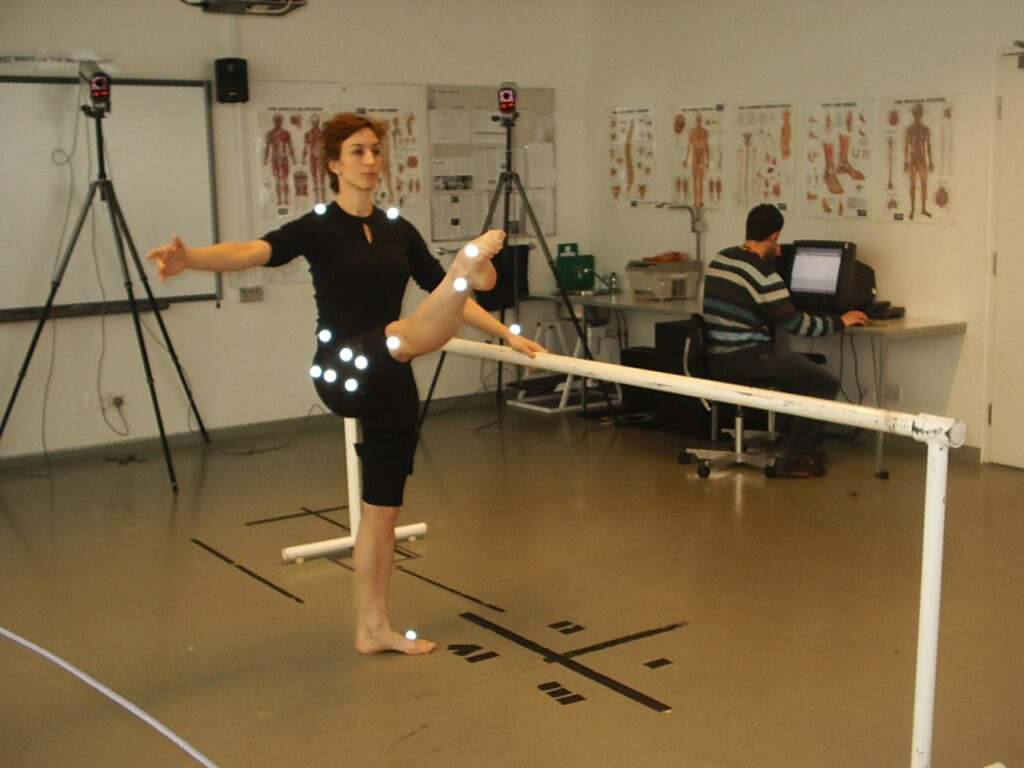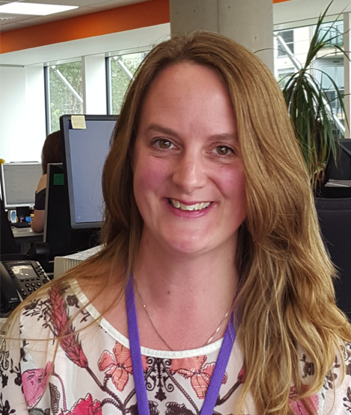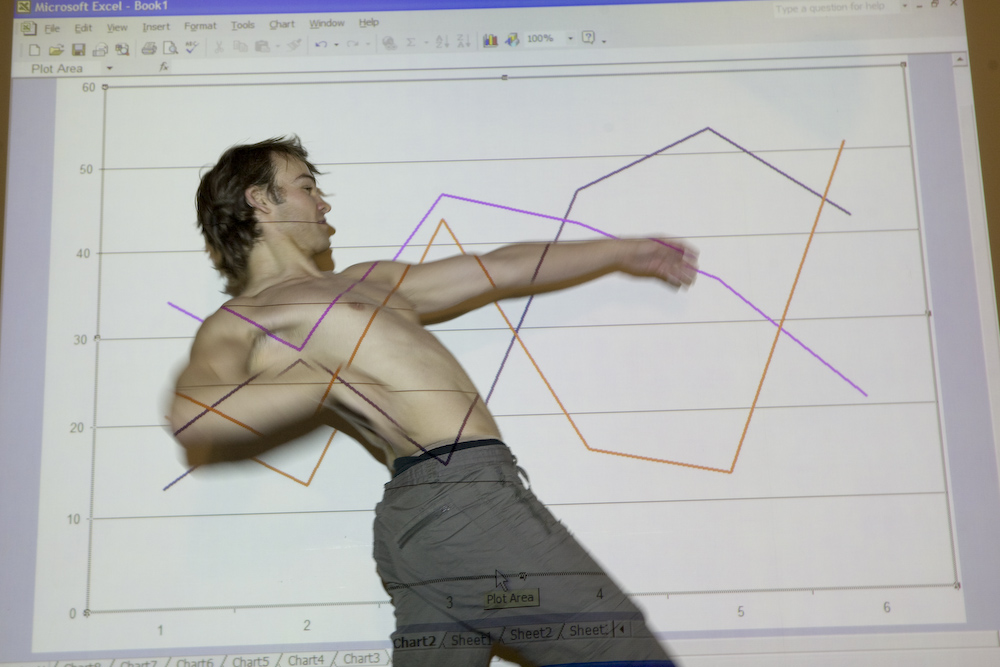
PLEASE NOTE: THE LONDON CLINIC OFFERING THIS SERVICE HAS BEEN SUMMARILY CLOSED DOWN BY THE NHS AS OF JUNE 2019
Lucinda Brereton is a successful commercial dancer. She made a smooth transition from the National Youth Ballet to musical theatre and has been consistently in work for the past decade.
She’s currently acting, singing and dancing in the West End hit Charlie and the Chocolate Factory, and her past work includes Mary Poppins and Chicago.

Like all dancers Lucinda has had injuries, but nothing she couldn’t dance through. However, about a year ago, things became more serious.
“I started getting pain in my lower back. It was not like the injuries I had before, where a week later you’re back to normal. This was something that interfered with my life, whether making coffee in the morning, hanging up my washing…”
In the past, she had spend a lot of money on private osteopaths and physiotherapists. She’d also had unfortunate experiences with GPs.
“You go to a regular GP and they say to you, ‘well, don’t dance,’ and I say, ‘well, I have to dance, don’t be a doctor, you know?’”
This time round, though, Lucinda was lucky. A friend recommended the Dance Clinic, which is accessible through the NHS.
The Dance Clinic
Now four years old, the Dance Clinic is part of the National Institute for Dance Medicine and Science, NIDMS for short.
That, in turn, is the result of a partnership between One Dance UK, Birmingham Royal Ballet’s Jerwood Centre for the Treatment and Prevention of Dance Injuries, Royal National Orthopaedic Hospital, Trinity Laban Conservatoire of Music and Dance, University of Birmingham and University of Wolverhampton.
Its aim is to provide affordable access to first class dance-specific healthcare and dance science support services across the UK.
Helen Laws is Head of Industry and Artist Support/NIDMS at One Dance UK and was deeply involved in the creation of the institute. She explains how dancers can access the specialist clinics.

“If you don’t have any private medical insurance, then you can access one of our free NHS clinics; to access those, you need to go to your GP and ask for a referral.
“You need to make the case that you’re a dancer, that this injury was either caused by dancing or affects your dancing and therefore you need to see a specialist to get you better as quickly and efficiently as possible.”
Not all GPs are cooperative, as Lucinda Brereton can testify; and many won’t have heard of the Dance Clinic nor indeed know much about specific dance injuries.
NIDMS is aware of the problem, says Helen Laws.
“Some GPs are immediately pleased to know that they can refer, because they may not know how to fix them; other GPs have their hands more tied by financial purse strings, and so sometimes they will want to refer you to the local hospital first.
“If that proves problematic we advise dancers to give us a call and we can talk them through the best way possible what to say to their GPs.”
At the moment there are three dance clinics nationwide, in Bath, Birmingham and London. The service is overseen by Doctor Roger Wolman, a specialist who’s been taking a close interest in dance injuries for many years.
The London Dance Clinic is housed in the Royal National Orthopaedic Hospital. In its bright, airy and welcoming surroundings, dance physiotherapist Caroline Jubb explained the procedure when injured dancers first attend.
“You’ll see a physio, or Dr. Wolman or one of the sports doctors. You’re assessed to see whether you need any blood tests, any imaging that can be CTs, it can be MRIs, it can be X-Rays.
“When we’ve gathered all that information together we’ll discuss with the patient and check that we’re all working towards the same goal.”
“Once we have the diagnosis we may refer you to physiotherapy, that can be here or with a local therapist.
“Often what I do is liaise with the physiotherapist, who can be local or a physiotherapist within the company, or within the university or the college, so that everybody knows what the dancer is doing, how much rest they need, what sort of dancing they need, and what sort of treatment they need.
“And that can change along the way, so in three-months’ time we can get back together and talk about the progression of that dancer’s rehab.”
Some injuries require more than physiotherapy. If so, says Caroline Jubb, the Dance Clinic is able to provide more complex treatments.
“We can refer you for injections and also for operations if we feel that you need a surgical review.
“We’ve got a number of consultants here who work alongside the dance clinic, who are used to working with dance people and sportspeople and they can do the operations for us here and then you have physiotherapy here after the operation, as well.”
Lucinda Brereton credits the Dance Clinic with having returned her to the stage 100 percent fit and healthy.
“They understand that it’s a professional career, it’s not a hobby – it’s your life! When you’re not at the peak of your fitness, it affects your whole life, your happiness, your money… it affects everything. I don’t feel for a second that I’ve been trivialised at the dance clinic.
“The practitioners talk to patients in a way that they can understand their body, their inner tools to help them get better.
“Every four months you see Dr. Wolman, he checks that everything is going well, you feel that you’re well looked after by the whole team.”
And all this on the NHS.
Of course, dancers with major companies have most of this specialised care in-house; but for independent dancers knowledge of the Dance Clinic and how to access it may mean the difference between a long, healthy career and premature retirement through catastrophic injury.
Although balleposition.com’s admittedly unscientific survey indicates that an alarming number of independent dancers are unaware of this service, the three NIDMS Dance Clinics are busy and there is often a waiting list.
So, it may make a lot of sense for freelance or small company dancers to invest in POP.
Performance Optimisation Package
POP, which is short for Performance Optimisation Package, is another useful resource created by NIDMS. Helen Laws:
“POP includes membership of One Dance UK (…) and two health-related benefits. One is the musculoskeletal and fitness screening and you get those in one of our Birmingham sites or Trinity Laban in London.
“That includes an assessment with a physio, who’ll give you a once over and tell you where your strengths and weaknesses might lie.
“You have the opportunity to talk about any niggles you might have before they become an injury and you get one-to-one feedback on the things you might want to do to help you strengthen and maintain the body free of injury.

“The other aspect of screening will involve working with top scientists to assess various aspects of your fitness including strength, cardio-respiratory and flexibility.”
Another important element of POP is a cash plan.
“It gives you cash back for up to £250-worth of treatments either with a physio, an osteopath, a chiropractor or an acupuncturist.
“It gives you a little money back if you see a chiropodist and it gives you up to £250-worth back if you need a diagnostic consultation, so if you need to see a consultant quickly and the waiting time is too long on the NHS, you can use it for that too.
“It also includes 24-hour GP helpline, 24-hour counselling helpline and some legal support, as well as dental.
“The main thing is that it’s affordable to dancers, the whole package costs £275 a year [student rate £230], so for that you’re getting up to £800-worth of direct value if you access all those things.”
Much remains to be studied about precisely what causes injury in dancers and the most effective forms of injury prevention; and that is the subject of an extensive nationwide study NIDMS is working on.
Meanwhile, though, it’s vital that independent dancers in Britain, who are entitled to NHS treatment, become aware of these provisions.
If you’ve read this far, do spread the word.
Full information at nidms.co.uk
E N D

Great valuable information! You have covered everything on physiotherapist that everyone should know about it. I’ve subscribed to your email list so whenever you publish a new article, I will keep aware of that. Keep sharing such good stuff!.